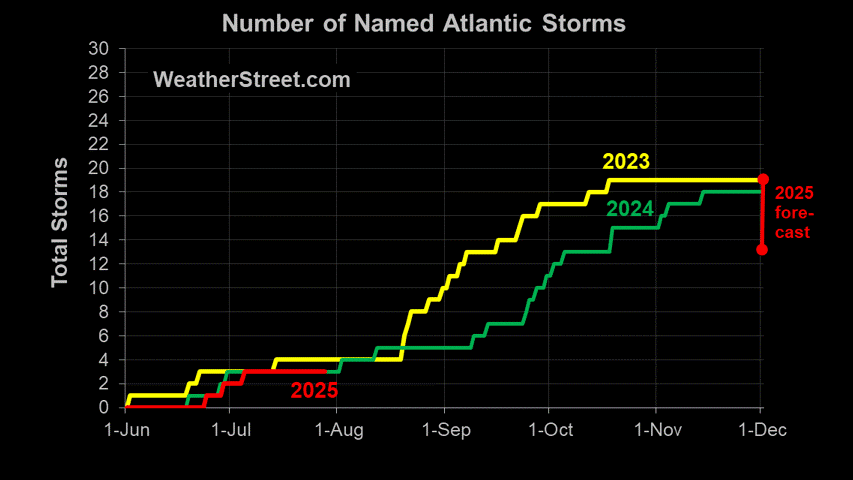Tropical Depression 3W has grown to Category 1 Typhoon Conson over the past 24 hours. Conson, known locally in the Philippines as Basyang, is packing sustained winds of 120 km/hr and gusts of 144 km/hr. The typhoon is moving towards the west at 28 km/hr.
 Enhanced satellite courtesy of PAGASA
Enhanced satellite courtesy of PAGASAConson is expected to further strengthen somewhat but remain a Cat 1 typhoon as it makes landfall in Luzon over the next 12 hours.
PAGASA (Philippine Atmospheric, Geological & AstronomicalServices Administration) has issued a Storm Warning Signal #2 for Catandueanes, Camarines Norte, Polillo, Aurora, Quirino and Isabella on Luzon Island. A PSWS No. 2 indicates that winds of 60 - 100 km/hr are expected within 24 hours.
A PSWS Signal No. 1 (30 - 60 km/hr winds) are expected through the rest of Luzon.
The biggest concern is the potential for flash floods due to the mountainous terrain of the island, especially near Mayon and Bulusan Volcanoes.
From Typhoon 2000:
Effects & Hazards: CONSON's (BASYANG) outer rain bands now covering Samar and Bicol Provinces, while its Inner rain bands now spreading across Catanduanes, where strong winds of up to 100 kph can be expected. 6-hr total rainfall amounts of 5 up to 150 mm (light, moderate to heavy rain) can be expected along the outer and inner rainbands...with isolated amounts of up to 200 mm (heavy) near the center of CONSON.
People living around the slopes of Mayon Volcano in Albay & of Bulusan Volcano in Sorsogon - especially along the areas where possible MUDFLOWS (LAHAR) FLOWS (mixture of volcanic mud and water) are located must stay alert as moderate to heavy rains associated by this system are likely to affect the area beginning late today until early tomorrow.
Residents in low-lying areas & steep slopes must remain alert & seek evacuation for possible life-threatening flash floods, mudslides & landslides due to the anticipated heavy rains brought about by this system. Precautionary measures must be initiated if necessary.
Possible coastal Storm Surge flooding of 4 to 5 feet above normal tide levels...accompanied by large and dangerous battering waves...is possible along the coastal areas of Bicol Region, Polillo, Quezon & Aurora. Minimal damage is likely on this type of storm surge.
'Basyang' barrels towards Luzon landfall Wednesday (GMA News)
At least 24 areas were placed under storm signals as tropical cyclone "Basyang" (international code name Conson) intensified anew Tuesday and threatened to make landfall over northern Aurora on Wednesday.
The Philippine Atmospheric, Geophysical and Astronomical Services Administration (PAGASA) said Basyang may stay in Philippine territory until at least Friday.
"Isabela, Aurora, Quirino, Polillo Island, Camarines Norte and Catanduanes will experience stormy weather. The rest of Northern and Central Luzon will have rains and gusty winds. The rest of the country will have mostly cloudy skies with scattered rain showers and thunderstorms," it said in its 5 a.m. bulletin.
PAGASA director Prisco Nilo said the storm may make landfall over the Isabela-Aurora area "between midnight and 2 a.m. Wednesday."
Nilo also hinted that should Basyang intensify, storm warnings may be upgraded in some areas to Signal No. 3, while Metro Manila may be placed under Signal No. 1, before noon Tuesday.
----------------------------------------------------
Tropical Storm Risk Alert
NW Pacific: Storm Alert issued at 12 Jul, 2010 18:00 GMT
Typhoon CONSON (03W) is forecast to strike land to the following likelihood(s) at the given lead time(s):
Red Alert Country(s) or Province(s)the Philippines
probability for CAT 1 or above is 50% within 12 hours
probability for TS is 80% within 12 hours
Red Alert City(s) and Town(s)
Daet (14.2 N, 122.9 E)
probability for CAT 1 or above is 35% in about 24 hours
probability for TS is 60% in about 24 hours
Yellow Alert City(s) and Town(s)San Jose (15.8 N, 121.5 E)
probability for CAT 1 or above is 20% in about 24 hours
probability for TS is 45% in about 24 hours
Manila (14.6 N, 121.0 E)
probability for CAT 1 or above is 20% in about 24 hours
probability for TS is 45% in about 24 hours
Green Alert City(s) and Town(s)Sorsogon (13.0 N, 124.1 E)
probability for TS is 40% within 12 hours
Note that
Red Alert (Severe) is CAT 1 or above to between 31% and 100% probability.
Yellow Alert (Elevated) is CAT 1 or above to between 10% and 30% probability, or TS to above 50% probability.
Green Alert (Low) is TS to between 31% and 50% probability.
CAT 1 means Typhoon strength winds of at least 74 mph, 119 km/h or 64 knots 1-min sustained.
TS means Tropical Storm strength winds of at least 39 mph, 63 km/h or 34 knots 1-min sustained.
For graphical forecast information and further details please visit http://www.tropicalstormrisk.com/
This alert is provided by Tropical Storm Risk (TSR) which is sponsored by UCL, Aon Benfield, Royal & SunAlliance, Crawford & Company and Aon Benfield UCL Hazard Research Centre. TSR acknowledges the support of the UK Met Office.












